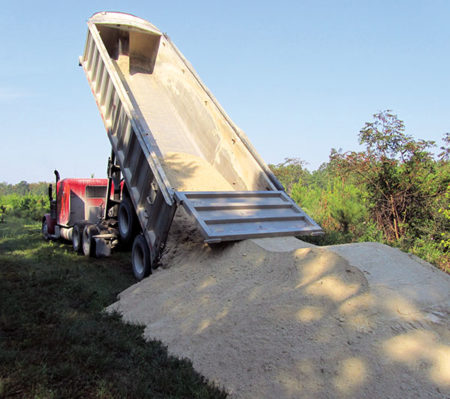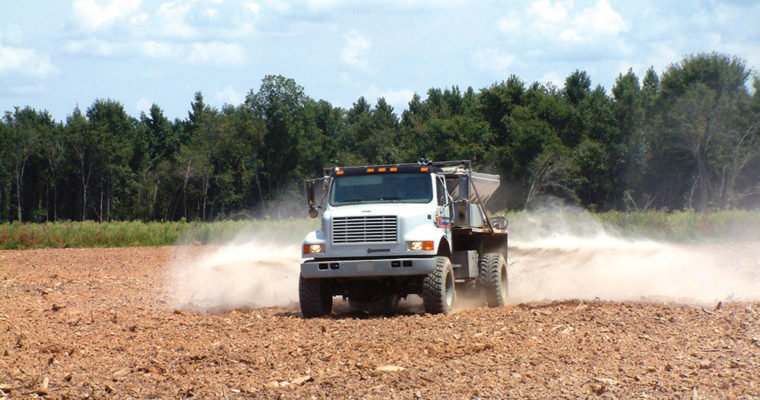If you have ever read an article about planting and managing food plots, the author undoubtedly recommended collecting soil samples to determine the appropriate amounts of lime and fertilizer that are needed to maximize the quality of the forages you are managing. This is certainly the case in every food plot species profile that I have written for Quality Whitetails over the past five years. While it may seem like we are beating a dead horse, this is where the tire meets the road with regard to improving soil health and forage quality that ultimately drives the productivity, nutritional quality, and attractiveness of our food plots.
We place a significant amount of responsibility on the soil in our food plots and have high expectations on their ability to provide the desired forage growth. Unfortunately, there isn’t a one-size-fits-all application when it comes to soil management because of so many variations in soil type and texture, geographic location, topographic location, species planted, and so on. All of these variations will require a different recipe in order to get your food plots in the best shape possible to achieve the desired results according to the specific forages you want to manage for deer and other wildlife.
A food plot with a pH of 5.6 is 10 times more acidic than a plot with a pH of 6.6 but 100 times more acidic than a plot with a pH of 7.6.
As mentioned above, the first step to achieving a successful food plot management program is to collect a soil sample to determine the soil pH and nutrient concentrations of minerals like phosphorus, potassium and others. In case you were wondering, pH stands for the “power of Hydrogen,” and it is usually referred to as soil acidity. It is a measure of how much hydrogen is present in the soil on a scale from 0 to 14, with 0 being extremely acidic and 14 being extremely basic. It is a logarithmic scale, and that means if a food plot has a pH of 5.6, it is 10 times more acidic than a plot with a pH of 6.6, but 100 times more acidic than a plot with a pH of 7.6.
Soil pH plays a significant role in plant growth and greatly influences the availability of nutrients to be used by plants. This cannot be overstated. When the soil pH is low, which generally means below 5.8, many of the important nutrients needed for plant growth, such as nitrogen, phosphorus, potassium, calcium, and magnesium are less available for plants to be able to use. Thus, if the pH in your food plots is low (acidic), much of the fertilizer that you likely applied when you planted is wasted and not able to be used by your forages. Simply put, the nutrients that are already present in the soil, plus the ones that are added through fertilizer, are essentially held hostage by the hydrogen in the soil until they can by released by liming and neutralizing the soil.

There are many types of liming materials that can be used to correct the soil pH. These materials are rated based on the fineness of the material and their neutralizing value. Thus, all liming materials are not the same, which should be considered in order to apply the correct amount to achieve desired results. The agriculture departments in most states require lime to be ground to a certain size (or fineness), which is important because this determines how quickly the lime will begin to neutralize the soil pH. The finer the lime, the quicker it begins to break down and work. By far the most common types of lime that are used in agricultural settings are dolomitic limestone and calcitic limestone.
If your food plots need to be limed, it is important to consider that it takes about 6 months or more for lime to begin raising the soil pH so it needs to be applied well in advance if possible. Keep this in mind as you plan activities. Also, incorporating lime into the soil by disking will help speed up the process. Forage production will slowly improve throughout the growing season as the pH slowly increases. If you plant with a no-till drill or by no-till top sowing, lime can effectively be applied on top of unbroken ground but understand that it will take longer for it to begin to move through the soil profile and correct the pH.

Bulk lime can be delivered in a number of ways, and you can distribute it later to individual food plots. Note, however, that bulk lime like that shown in this photo has a consistency like damp sand and requires a drop spreader or belt-fed spreader. It cannot be distributed with a broadcast spreader. Only pelletized lime can be distributed with a broadcast spreader.
One question that commonly comes up from food plotters is how much lime to apply and if split applications would be more effective if the soil test recommends a large amount. While many soils may require 2 tons per acre or less to correct the pH, it is not uncommon for some to need 3 to 4 tons per acre. In this case, go ahead and apply the recommended amount in one application if possible. There are no practical advantages that I am aware of that would justify having to increase the number of trips to your plots that would be necessary if splitting lime applications
In terms of applying lime to your food plots, the easiest and most efficient method is to purchase lime in bulk and either spread it with a rented lime buggy or hire an agricultural supply dealer to spread it for you with a lime truck. However, if you are dealing with small acreage and/or food plots that are difficult to access with large equipment, purchasing bagged lime will be your best option. This comes either pulverized or in a pelletized form, which helps facilitate spread. It is important to understand that in most cases pelletized lime is the same type of lime (calcitic or dolomitic limestone) that you would purchase in bulk, only compressed into larger particles to help you spread it. Thus, the same amount would need to be applied per acre to correct the pH.
As you can see, maintaining a neutral pH with lime is a critical part of a successful food plot management program. Periodic liming every few years will be necessary to maintain the pH in the neutral range. Doing so will help maximize forage production, which will make your food plots more attractive for the critters you are providing them for. Healthy plots also are more resistant to heavy grazing pressure and other adverse conditions that negatively affect forage growth, such as drought, insects, disease and weed pressure. Make sure you are addressing this important factor to get the most out of your food plots.
